How climate change is affecting cruise ships: storms and sea conditions to watch
With the effects of hurricanes and wild storms becoming more profound, are you putting yourself at risk by going on a voyage?
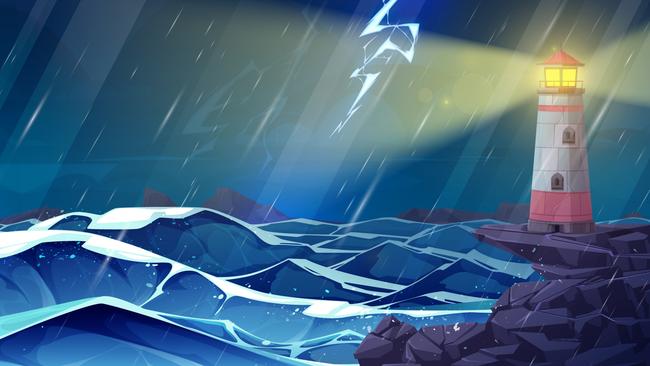
Across the globe, tempestuous seas are more prevalent than ever. Storm force conditions in the Bay of Biscay in November 2023 had fatal consequences for Saga Cruises’ Spirit of Discovery. According to accident investigators, a combination of ferocious seas and propulsion issues with the vessel resulted in more than 100 injuries. On arrival in Portsmouth in England, eight passengers were taken to hospital, one of whom later died.
You don’t need to be a meteorologist to know the effects of hurricanes and wild storms are becoming more profound. Despite their highly engineered design and state-of-the-art stabilisers, cruise ships are at the mercy of low-pressure systems. And it’s not just crossing the notorious Drake Passage or encountering barometric anomalies in the Bermuda Triangle that are problematic.
Covering more than 70 per cent of the Earth’s surface, the world’s oceans are at the mercy of climate change. Warmer ocean waters mean storms can pick up more energy, leading to higher wind speeds and record high sea surface temperatures. These were key reasons US scientists forecast an above-normal Atlantic hurricane season for 2024, which delivered 18 named storms, 11 hurricanes and five major hurricanes.
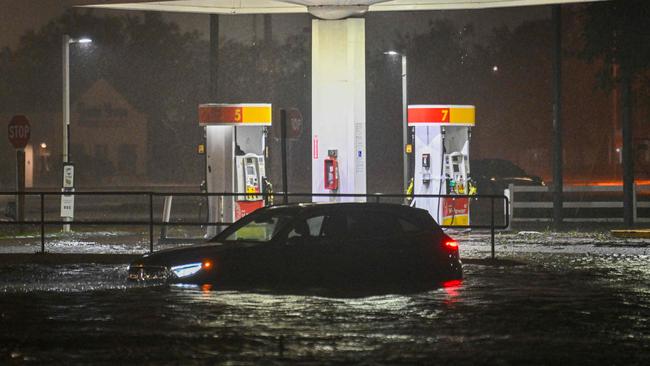
In my 40-year career as a cruise writer and maritime historian, I’ve encountered plenty of bad weather affecting cruises. I’ve sailed through a hurricane crossing the Atlantic to New York and a typhoon in the South China Sea; my passage to Antarctica was more rock than roll, and; I succumbed to mal de mer as fierce winds churned on a voyage to the Outer Hebrides. Did I feel nervous during any of these encounters? Not once. I had complete faith in the expertise of the master mariners on the ship’s bridge and the structural integrity of the steel-clad keel cutting through the angry seas.
Here’s what you need to know about cruising during a storm.
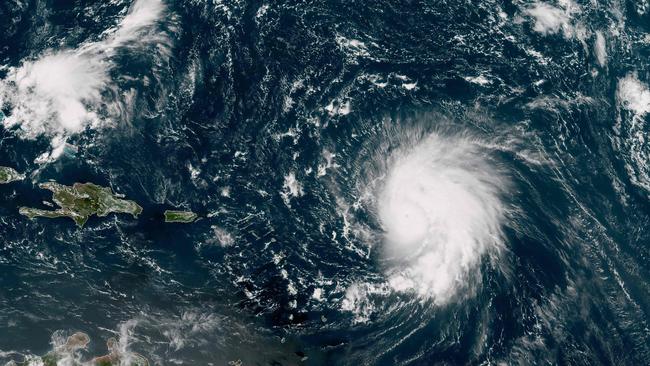
When are you most likely to experience storms?
Ocean-going ships can encounter ferocious seas whether they’re searching for the northern lights along the Norwegian coast in winter months, or crossing the Drake Passage (between the southern tip of South America and the Antarctic Peninsula), notorious for the “Drake shake”. Hurricane season in the Caribbean officially lasts from June 1 to November 30 and frequently impacts cruise schedules.
The North Atlantic can pack a punch from September until February, when the barometric pressure plunges, giving even the sturdiest ships a rollercoaster ride through squally seas.
Another seaway where storms lurk during autumn and winter months is the Bay of Biscay. This portion of the Atlantic, located off the west coast of France and northern coast of Spain, is renowned for restless seas that can test the mettle of even the most seasoned sea dog.
Can cruise ships withstand storms?
Cruise ships have thick steel hulls that can withstand the ravages of a storm. The vessel might list to one side, then the other, in a motion known as rolling. Alternatively, a forward movement might pitch down into the swells before rearing up again. None of this should cause concern, as every ship has been tested in simulated storm conditions. You might notice the swimming pool is emptied and outdoor decks closed off but, inside the ship, the well-trained crew knows what measures to enact to make passengers safe and comfortable.
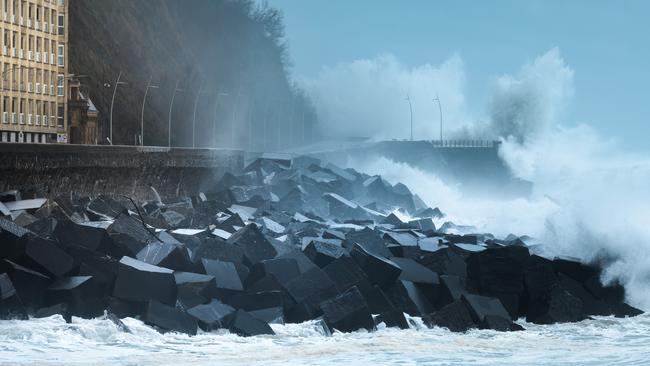
What do cruise ships do to protect themselves?
As operational safety is an absolute priority, cruise lines are increasingly one step ahead in forecasting bad weather. They have the latest meteorological equipment, as well as an arsenal of weather charts, satellite images of storm activity, and even computer models from the National Oceanic and Atmospheric Administration in the US. Royal Caribbean Group, as an example, has a “storm centre” at its Miami headquarters where, during hurricane season, a wall of screens is monitored by the company’s chief meteorologist.
One man who’s been at the helm when nature throws a tantrum is captain Dag Dvergastein. With five decades of experience sailing the globe with Seven Seas Cruises, Seabourn and now Hapag-Lloyd Cruises, Dvergastein has valuable insight.
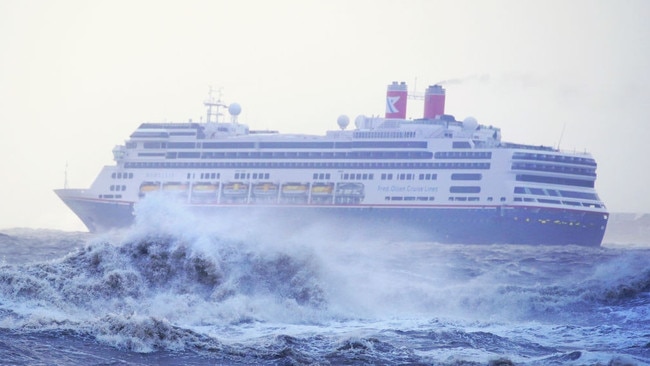
“Each ship is constructed to a class standard such as Lloyd’s or Bureau Veritas to certify safety,” he says. “Ships of all sizes will experience movement in heavy weather, but the larger the ship, the less the movement. Stabilisers minimise the rolling motion, thus maximising comfort.
“With a severe weather forecast, ships’ management teams will do their utmost to mitigate the effects of stormy seas. If the outlook is poor, the captain may decide to extend the stay in port. If the ship is at sea, it can seek shelter in the lee of an island, but sometimes there’s no option but to operate through turbulent seas. Operational decisions are made in consultation with the maritime team at head office, the captain, and the on-board navigation team.”
What can I do to stay safe on a cruise ship during a storm?
Savvy cruisers often select cabin in the middle of the ship, undoubtedly less prone to movement. Although they’re the most expensive options, penthouses and suites – often located on the higher decks – can be challenging when the motion of the ocean goes up a gear. Old salts listen to announcements from the captain, but they know “lively” is a well-worn euphemism for “raging” when it comes to the state of the sea.
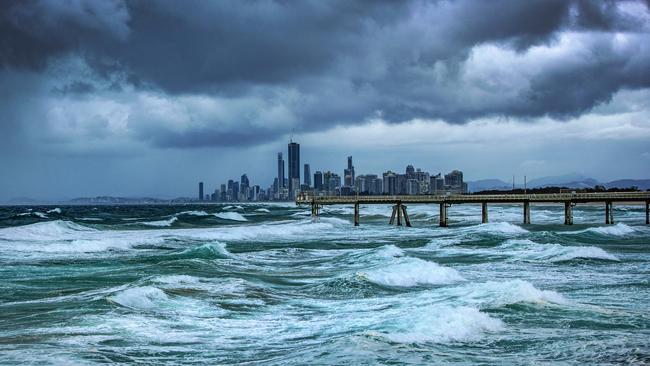
Safety is always the top priority. Andy Harmer, managing director, UK & Ireland at cruise industry trade association CLIA, says: “The first line of decision-making is always based on what is the safest course of action based on current and potential challenges. There are rare occurrences where unpredicted storms arise outside of forecasts. In these situations, the crew has extensive training to navigate the situation, with the safety and comfort of the guests as the top priority.”
If you’re concerned about storms, there are simple measures to take. Time your voyage to minimise the chance of bad weather; a trans-Atlantic crossing in March-April, for example, might be a better bet than November. Book a cabin low in the centre of the ship. If the captain announces rough weather ahead, put loose items away. And don’t forget the motion-sickness pills.
THE TIMES
If you love to travel, sign up to our free weekly Travel + Luxury newsletterhere.




To join the conversation, please log in. Don't have an account? Register
Join the conversation, you are commenting as Logout